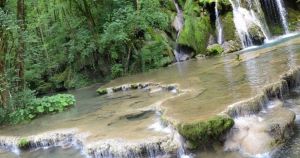Organisms, communities, populations, and ecosystems as a whole make up the biosphere. The biosphere contains all living things on earth, extending as far as 12,500 meters from the surface of the earth.The biosphere has existed for about 3.5 billion years.
Table of Contents
Which of these terms refers to organisms, communities, populations, and ecosystems as a whole?
Biosphere is the term that refers to organisms, communities, populations, and ecosystems as a whole.

Examples of the biosphere:
- Tundras.
- Deserts
- Tropical rainforests.
- deciduous forests.
- Oceans.
A major regional or global community of organisms is called
A major regional or global community of organisms is called a biome.
It is an area classified according to the species that live in that location. Temperature range, soil type, and the amount of light and water are unique to a particular place and form the niches for specific species allowing scientists to define the biome.
Similarity between biosphere and ecosystem
The similarity between biosphere and ecosystem is that both an ecosystem and a biosphere include the living and nonliving components of earth.
It’s important to consider that an ecosystem is a part of the biosphere, and the biosphere is one of the four layers of the planet Earth.
All ecosystems taken together make up a

All ecosystems taken together make up a biosphere.
The biosphere provides the necessary environmental conditions for survival. Living organisms are required to adapt to the environment of the biosphere. The biosphere is home to biodiversity within ecosystems while providing a reliable source of food on Earth.
An ecosystem would include all of the following except
An ecosystem would include all living as well as non-living things in our environment except the biosphere.
“The biosphere” is the collection of all of the ecosystems on earth.
Examples of ecosystems are: agroecosystem, aquatic ecosystem, coral reef, desert, forest, human ecosystem, littoral zone, marine ecosystem, prairie, rainforest, savanna, steppe, taiga, tundra, etc.
Define and compare the terms “species,” “population,” and “ecosystem.”
Species: members of one kind of organism in an ecosystem consisting of similar individuals capable of exchanging genes or interbreeding are called species.
Population: Animals or organisms of one species are called the population of living things. The organisms most likely to belong to the same species are together called a population. Several different species make up a community.
Ecosystem: a community and its physical environment together is termed an ecosystem.
The number of specific organisms found in an ecosystem or community

Biodiversity is the number of specific organisms found in an ecosystem or community.
A variety of animals, plants, fungi, and even microorganisms like bacteria make up our natural world. All of these species and organisms work together in ecosystems, like an intricate web, to maintain balance and support life.
A community differs from a population in that a community
A community differs from a population in that a community refers to a group or association of populations of two or more different species occupying the same geographical area and at a particular time.Communities evolve to have greater biomass and species richness in a process called succession.
How do populations and communities affect one another?
Populations and communities affect one another because they interact with each other for survival, nutrition, resources, or space. These interactions are called ecological relationships.
Interdependence in nature is illustrated by the transfer of energy.
Which description is true for most communities?

A community is best described as the collection of populations of different species that live in a particular area.
For example, a forest of trees and undergrowth plants, inhabited by animals and rooted in soil containing bacteria and fungi, constitutes a biological community.
Lindeman developed a classification of organisms based on
Lindeman developed a classification of organisms based on their size.
Before Lindeman, ecologists focused on classification and characteristics of plant and animal species. He shifted the focus to ecosystems by showing how organisms depend on each other and their environment for survival.
Within each biome, how can the environment be organized into levels from complex to simple?
Within each biome, the environment can be organized into different levels, including individuals, populations, communities, and ecosystems. Ecosystems are the most complex, and individuals are the most simple. Biomes are characterized by climate conditions and the communities of living things found within them.
Every organism has a habitat and a niche.
Dynamic biology definition
By dynamic biology, we mean the temporal aspect of biological phenomena and, in particular, how components interact to give rise to biological processes.
The functions of your ecology of reproduction or the dynamics of life are often used to better understand the workings of other aspects of biology. On the list of interesting points to note is that, depending on the level of investigation carried out, the dynamics of life can address the approach of evolution at the same time as biodiversity.
FAQ
An area with similar land features, climates, and plant and animal life forms.
An area with similar land features, climates, plant and animal life forms is termed a biome.
What does it mean for the ecosystem when most of the interactions are weak?
When most of the interactions are weak, the complexity of the ecosystem is reduced.